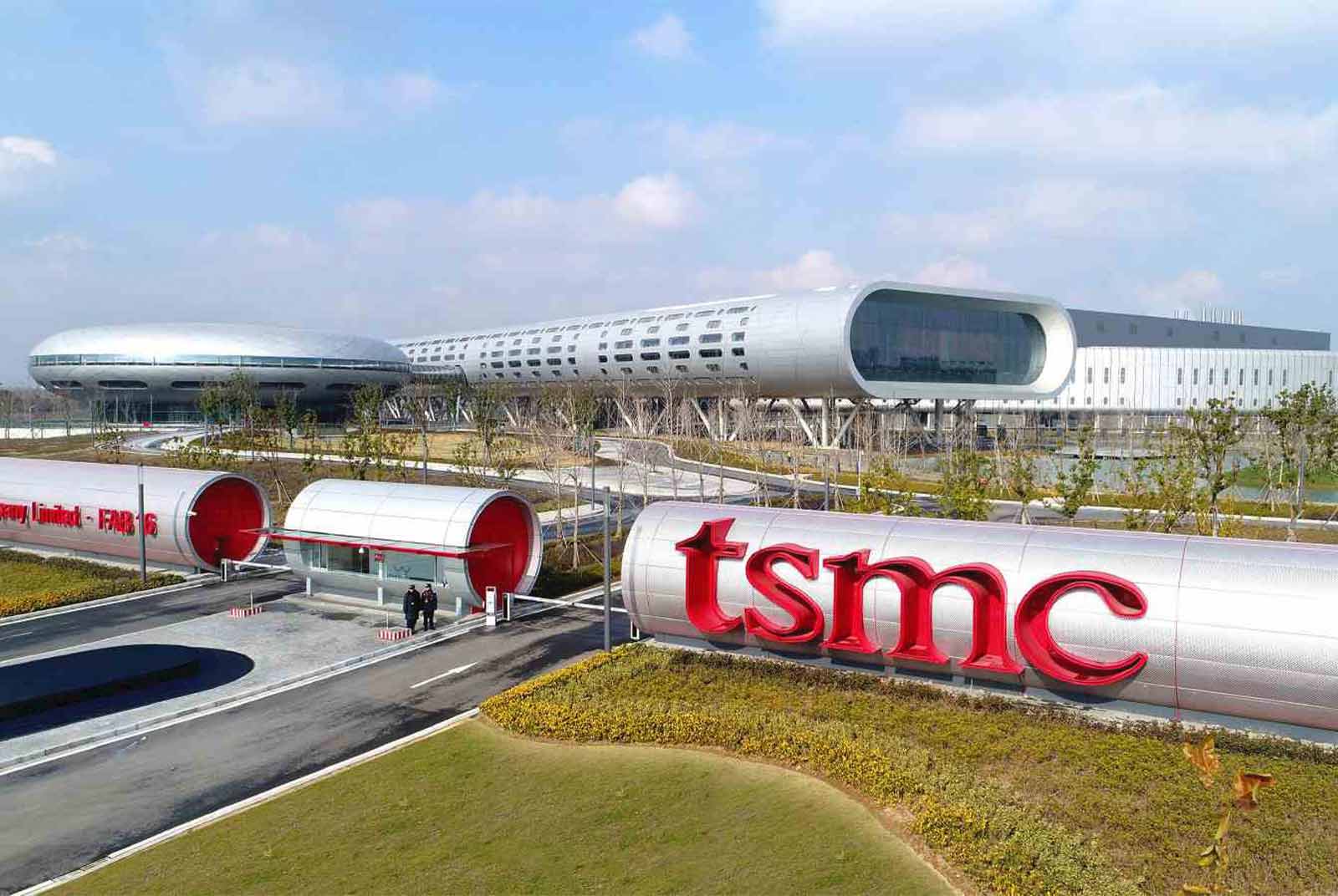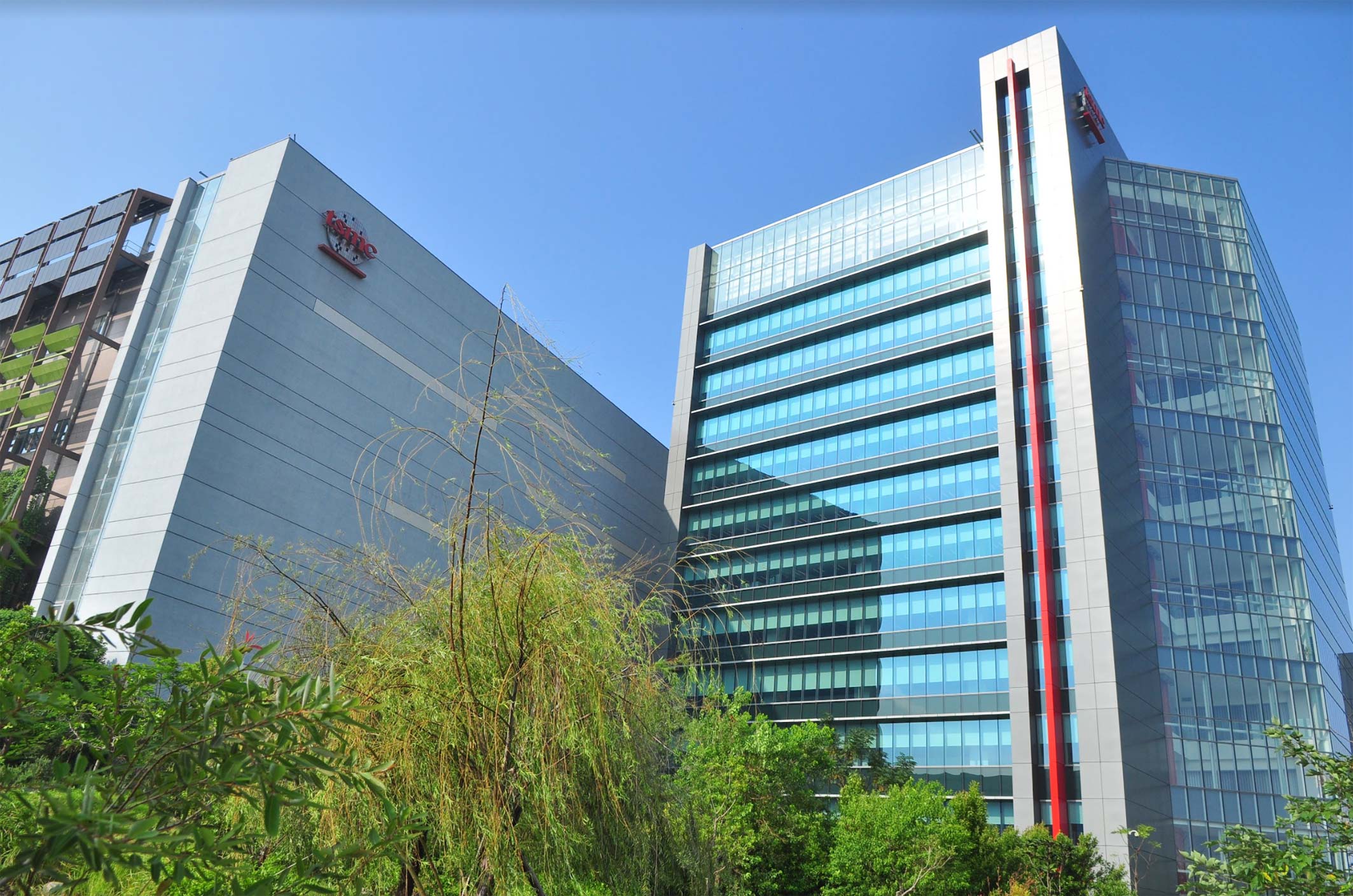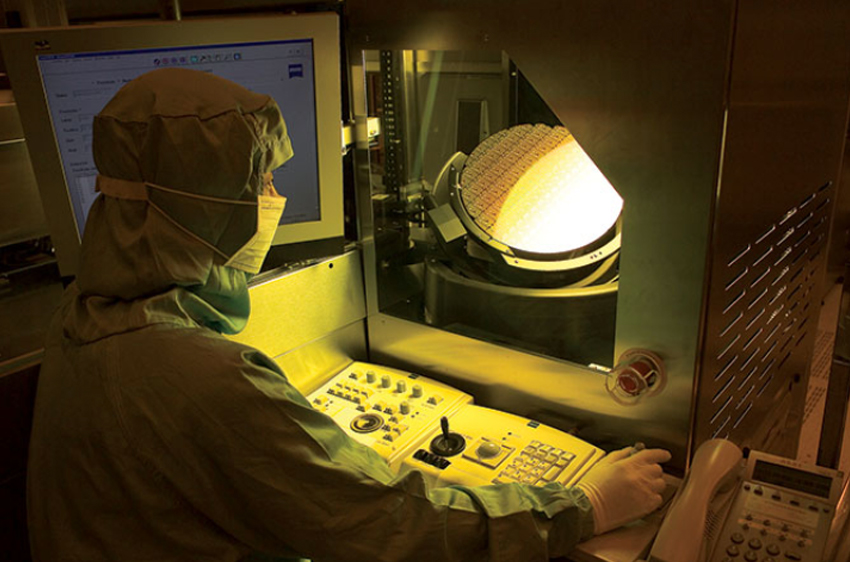TSMC’s bold net zero pledge: Cutting a Taipei’s worth of emissions

Source:Ming-Tang Huang
TSMC has pledged to reduce its emissions to zero by 2050, a goal TSMC Chairman Mark Liu recently spoke about with CommonWealth Magazine for the first time since taking the helm three years ago. How does the company plan to achieve this difficult goal?
Views
TSMC’s bold net zero pledge: Cutting a Taipei’s worth of emissions
By Jimmy HsiungFrom CommonWealth Magazine (vol. 732 )
On September 16, 2021, the world’s largest contract chipmaker TSMC pledged to achieve net zero emissions by 2050.
It was the second major commitment TSMC made on climate change in two years after joining the 100-percent renewable energy RE100 initiative in 2020 and promising to use only renewable energy in its operations by 2050.
The net zero commitment was more daunting, because the company will have to whittle down the nearly 10 million metric tons of carbon emissions it generates every year to zero within 30 years.
“It shouldn’t be too surprising” that TSMC made this pledge, the company’s chairman Mark Liu told CommonWealth. Taiwan must move in the direction of net zero emissions, and TSMC is just playing its role in standing up to get the industrial sector and the government to move forward together, Liu said.
Achieving the target will be anything but easy. Compared to manufacturers in the petrochemical and steel industries that directly generate large amounts of emissions, TSMC factories do not have smokestacks. Instead, the semiconductor giant cooks up a huge amount of indirect emissions through the massive amount of electricity it consumes.
TSMC was Taiwan’s fourth-biggest carbon emitter in 2020, trailing only state-run power company Taiwan Power Company, petrochemical giant Formosa Plastics Group, and Taiwan’s biggest steel company, China Steel Corporation.
 (Source: Jyun-Jhu Wang)
(Source: Jyun-Jhu Wang)
As the company develops more advanced chip manufacturing processes, its trend toward ever higher carbon emissions will continue unabated. Over the past 10 years, TSMC’s electricity consumption has tripled and carbon emissions have doubled despite its carbon reduction efforts.
Based on its average annual growth in carbon emissions of 10.76 percent, TSMC could very well generate 11 million metric tons of those emissions in 2022, equal to roughly the amount produced by Taipei, Taiwan’s capital city.
Which is why the net zero emissions declaration is so ambitious and will decide the chipmaker’s future over the next 30 years. It has five main strategies to turn the vision into reality.
Strategy 1: Building an ESG central nervous system
At the heart of TSMC’s net zero campaign is an ESG (environmental, social and governance) organizational structure that has been in the planning stages for many years.
As early as 2011, TSMC founder Morris Chang (張忠謀) created an ESG matrix diagram for the company and established an ESG Committee, led by Senior Vice President Lora Ho. The ESG structure was founded on five themes: green manufacturing, an inclusive workplace, a responsible supply chain, talent cultivation, and care for the disadvantaged.
In 2019, TSMC created an “ESG Steering Committee” led by incumbent Chairman Liu.
Planning of the net zero campaign began at the end of last year, and it was discussed several times by the board of directors because of its potentially huge impact on TSMC’s future product development and investments. Liu said the company will issue restricted stock awards annually that will link executive compensation to achieving ESG goals and focus the entire company on ESG practices.
Strategy 2: Cut emissions from three major sources to zero
TSMC’s timetable to net zero emissions has it hitting zero growth in emissions by 2025, cutting emissions to the 2020 level by 2030, and then eliminating all carbon emissions by 2050.
Over the past 10 years, TSMC’s carbon emissions have grown exponentially. With more than 20 new wafer foundries expected to be built in the next three and a half years, can it really cut emissions growth to zero?
Ho said TSMC has three main sources of emissions – electricity, which accounts for 62% of the total, manufacturing (14%), and supplier emissions (24%).
 (Soure: TSMC)
(Soure: TSMC)
“We must do our best to cut emissions in each of those areas to zero,” she said, and only where the company falls short will it resort to carbon offsets, whether carbon capture and storage or emissions trading schemes, to get to net zero.
Strategy 3: More efficient chip production tools/technologies
Based on TSMC’s internal estimates, its heaviest use of electricity consumption comes from the machines used in advanced process chip manufacturing, accounting for more than 50 percent of total power usage. That’s why it has worked with equipment manufacturers since 2016 to develop energy-saving equipment.
The “iSystem” Internet of Things intelligent energy-saving system, developed in partnership with U.S.-based Applied Materials, is one example. The system was introduced in 2016 and now covers about 588 production tools in TSMC’s Fab 15B in Taichung, saving 13.4 million kWh of power and avoiding around 14,000 metric tons of carbon emissions annually.
Ho said TSMC set an internal goal in 2019 to double the production efficiency of all mass production technologies by their fifth year.
Strategy 4: Introducing ‘clean’ natural gas
Even after exhausting every alternative for saving energy, TSMC needs to be sure that it uses renewable energy if it hopes to achieve net zero emissions.
In 2015, a large TSMC customer requested that all companies manufacturing products for it must eventually use green energy exclusively. Ho recalled that people in the company were originally highly resistant to the idea, wondering where it could get green energy in Taiwan. It later subscribed to 100 million kWh of green electricity with the Ministry of Economic Affairs.
More recently, TSMC said it would set up a foundry using its most advanced 3-nanometer process in the Southern Taiwan Science Park, and environmental groups demanded that it use at least 20-percent green energy, prompting TSMC to join the RE100 movement in July of 2020.
To meet its commitments, the company has scrambled to develop sources of green energy, whether generating solar power for its own use or having it transmitted directly from outside sources, purchasing wind power, or buying renewable energy certificates from around the world.
Now, not only do plans for the 3-nm fab in the Southern Taiwan Science Park meet the demands of environmentalists, TSMC has also achieved its goal of renewables accounting for 7.6 percent of total power needs in 2020, and all TSMC offices and overseas sites use 100% renewable energy.
A downside, however, is that “all of the renewable energy being generated by the country has been bought up by TSMC,” said Niven Huang, the managing director of KPMG Sustainability Consulting Co.
 (Source: Ming-Tang Huang)
(Source: Ming-Tang Huang)
An energy sector insider added: “It’s a double-edged sword. Everybody wants TSMC to stay in Taiwan but also criticize it for making it impossible for other companies to buy green energy.” The key, the source said, was for the government to provide more support.
The company has also explored several new models, including one related to its use of natural gas in its factories. Though this accounts for less than two percent of TSMC’s emissions, it still met with state-run oil refiner CPC Corp. to discuss cutting emissions and accelerating its timetable on “clean gas”. CPC Corp. is working with a natural conservation area in Indonesia to help TSMC complete Taiwan’s first clean gas certificate through a carbon offset scheme, in which carbon credits are obtained from the project in Indonesia.
Strategy 5: Encourage suppliers to cut carbon
The final piece of TSMC’s carbon reduction puzzle involves its supply chain, which has gone more local in recent years. The company is notorious within the semiconductor sector for the rigorous demands it makes of suppliers, and those have now extended into the ESG domain.
“The moment we heard that TSMC was going to put a high priority on saving energy and cutting carbon, we began to conduct a greenhouse gas inventory,” said Teresa Yang (楊慈惠), the general manager of Kertz High Tech Co., which is responsible for keeping the components of TSMC’s machines clean.
Ten years ago, Kertz was a small cleaning company whose factory smelled of pungent chemicals and was packed with greasy machines. With the help of TSMC’s guidance, however, its factory is now well managed, and company revenue has jumped from NT$400 million to NT$1.3 billion a year.
TSMC has at least 1,500 suppliers similar to Kertz. At last year’s Supply Chain Management Forum, Ho announced a new purchasing goal to representatives of more than 700 suppliers who attended in person – having suppliers cut energy consumption by 20 percent by 2030.
To help suppliers embrace the goal, TSMC set up a global online learning system last year called “Supply Online 360” and established a “TSMC Supplier Sustainability Academy” that provided courses on energy conservation and carbon reduction.
In 2020, TSMC’s supply chain saved 210 million kWh of power, and is moving toward a goal of 320 million kWh in power savings this year.
Interview with Mark Liu
 (Source: Ming-Tang Huang)
(Source: Ming-Tang Huang)
Below are excerpts of CommonWealth Magazine’s exclusive interview with TSMC Chairman Mark Liu on net zero emissions and its ESG vision:
Question: What pushed TSMC to commit to achieving net zero emissions?
Mark Liu: Actually, it shouldn’t be too surprising. The whole country should do that by 2050.
Our company’s exposure is quite extensive. Our big clients are all leading international companies, and when Apple began talking about ESG, we started getting nervous.
So we had to be more proactive, and we wanted to bring others in the industry with us. But government engagement is even more important, and we hope we can spark even bolder public action.
Sometimes the government doesn’t dare take action because of many factors, but when companies start acting on their own, it might get bolder. So if we make the first move, it will be easier for Taiwan to follow.
Q: Do suppliers feel the same way?
Liu: They will feel a little pressure. To be honest, it isn’t really that expensive to do; it’s just a matter of whether they are willing or not. If Taiwanese companies do not act, we will be marginalized, because international global carbon taxes are coming very soon. Not taking action will have consequences. We in Taiwan have to be able to survive together.
Q: Did foreign investors pressure you to adopt ESG practices or commit to net zero emissions?
Liu: I actually don’t feel there has been much pressure from investors. The main issue is whether companies have a sense of social responsibility. It’s like with climate change, where at the beginning it has been big companies acting out of a sense of responsibility.
Now is the right time to push ESG, because the younger generation wants work to be integrated into their overall lives. The more enthusiastic the participation of young people, the more hope there is for the company.
Q: What will be the biggest challenge for TSMC in achieving net zero emissions?
Liu: The biggest difficulty is how Taiwan’s energy policy can support us in achieving the goal.
Taiwan has a green energy policy, but it is too gradual.
Since the decision has been made to move toward green energy, you might as well go for it. We’ve pretty much bought most of Taiwan’s green energy.
Taiwan also does not have a carbon credit system. Global carbon fees will start to become a reality within two years, but Taiwan has still moved very slowly on this because of several problems.
Taiwanese society’s understanding of policies is often too politicized. For example, green energy is a good plan and shouldn’t always be attacked. What should happen is that when there’s a problem, efforts should be made to solve it so that the policy is more likely to be successful.
Government regulations also need to be clearer. The government should clearly state, for example, when fossil-fuel cars will no longer be sold; it should not be decided by election considerations. If you do the right thing, companies can quickly change to adapt to it or find a new profit opportunity.
Right now, it should be about the global village concept rather than focusing on political stances. Our company doesn’t have a political viewpoint, which makes doing things simpler, and sometimes the things we do can spur society forward.
Q: As TSMC deals with climate-related risks, has it seen any new commercial opportunities?
Liu: TSMC’s main goal in recent years has focused on social influence. We have calculated that every kilowatt-hour of electricity we use can help the world save four kWh.
Our R&D also prioritizes this area, looking to (support products) that save energy and can be used longer.
Q: Is the semiconductor industry as a whole moving in the direction of a low-carbon transition?
Liu: The semiconductor sector is relatively small, and we all know each other.
This sector is special in that you have to constantly upgrade to survive, and “innovation” is a necessary condition of survival. So “change” comes more easily to the semiconductor companies. But introducing new technologies into non-high-tech industries can be very difficult, which is why I said that government incentives are needed to help.
Q: Achieving net zero emissions will be very difficult, and you may not be able to reach the goal. How do you view this commitment?
Liu: It doesn’t just depend on us alone. We have to cooperate with others if we are to succeed. I’m pretty optimistic. I think we can achieve the goal, but we can’t measure ourselves against others in Taiwan. When the whole world is moving in this direction, if you don’t follow, you will become obsolete.
Have you read?
♦ How TSMC may change Taiwan’s ‘Rust Belt City’
♦ TSMC Recovered Firefly Population in Plant Zone
Translated by Luke Sabatier
Edited by TC Lin
Uploaded by Penny Chiang






